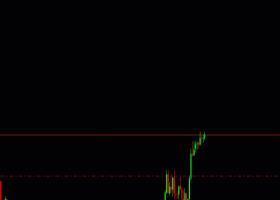Pound to euro exchange rate at 1.43 - a 7 year high / Euro to dollar exchange rate at 1.09.
The euro exchange rate complex remains under pressure on news that the ECB will keep its monetary policy unchanged.
At a monthly policy meeting it was repeated that the Bank would continue its asset purchase programme at least until September 2016 and as long as necessary to restore medium-term price stability.
If the ECB had instead said they see their expanded asset purchase programme ending earlier then the euro would certainly have shot higher.
Likewise, had any mention of speeding up the project been announced the currency would certainly have slumped in dramatic fashion.
The asset purchase programme will ultimately see an additional 60BN euros worth of currency flood the Eurozone by late 2016 - it is this that has been the ultimate driver of a lower euro exchange rate complex.
Forecasters are presently pricing in the pound to euro conversion to fall lower over coming months in anticipation of the continued actions at the ECB. Our forecast section sees mid-2016 forecasts ranging from a high of 1.52 to a level of 1.45 which appears popular amongst institutional analysts. The euro v dollar exchange rate is seen falling to parity by many with an equally sizeable chunk of institutional analysts seeing 1.05 being a low point.
At the time of writing the GBP-EUR is at a 7 year best with spot market quotes seen at 1.43 and international bank payments being offered around 1.39. Independent specialists are quoting closer to 1.4130 for those looking to make GBP-EUR transactions.
ECB Stays Steady
The ECB’s Governing Council decided to leave its monetary policy unchanged and restated its commitment to continue its asset purchase programme at least until September 2016, until we see a sustained adjustment in inflation consistent with price stability, ie, the medium-term outlook below, but close to, 2%.
President Draghi noted that the GC was closely monitoring developments in financial markets. He said that recent market uncertainties had not changed the economic outlook for now.
ECB keeps euro rates steadyShould the situation change, particularly in financial markets, and threaten the accommodative stance of monetary policy due to unwarranted tightening and price stability, the GC would stand ready to act and use all available tools in its mandate.
This echoes statements made by some other board members during the last few weeks that further monetary support would not be ruled out should the outlook deteriorate.
“Our view is that the ECB will indeed continue its monthly asset purchases at the same pace until September 2016, and probably even longer as we believe the increase in inflation will likely be slower than the ECB currently projects,” says Philippe Gudin at Barclays.
Greece Not Yet a Headache
A lot of focus understandably fell on Greece at the July meeting. Draghi said the Bank had decided to increase the ELA ceiling by €0.9bn (over one week) to €90.7bn, and kept haircuts on collateral unchanged.
“The decision to increase the liquidity available to Greek banks was justified by the prospect of an agreement on a third programme since last Monday’s deal between Greece and its creditors and the positive vote at the Greek parliament last night, as well as the evidence that the Greek government will honour its payment to the ECB on 20 July and clear the arrears with the IMF,” notes Gudin.
Importantly Draghi considers that discussions about a 'Grexit' have not undermined the stability of the euro area so far. This is important in understanding why the euro exchange rate complex has been arguably relatively immune to the ups and downs that come with the Greek saga. Until we get the sense that the ECB will speed up its purchase programme or take other extraordinary measures we doubt the euro will suffer.
Rather we forecast a steady decline lower over a broad one year timeframe.


